Andres Garcia Jimenez is a PhD candidate in aeronautics and astronautics whose research interests lie at the intersection of materials science, mechanics, and aerospace engineering. Specifically, Andres is working to elucidate the mechanisms that drive frictional ignition of engineering alloys in high-pressure oxygen environments, such as those encountered in next- generation staged combustion rocket engines. These engines offer propellant efficiency without sacrificing thrust capability but pose challenges such as frictional heating due to the rubbing of rotating components. Andres’s work examines the causes of frictional ignition through experiments, contact mechanics theory, and metallurgical thermochemistry. MATLAB has been an essential tool for Andres in building multi-physics models and analyzing experimental data. Recently, Andres identified a specific material, Inconel MA754, as uniquely ignition-resistant, and is working to refine the processing and performance of this material. Engine designers at Blue Origin and SpaceX are now using Andres’s work to guide their materials selection and engine design, and his research is paving the way toward advanced fail-safe rocket engines and new alloy compositions resistant to frictional ignition under extreme operating conditions.
https://engineering.mit.edu/wp-content/uploads/2024/10/headshot_Garcia-Jimenez_Andres_MathWorks_SoE_2025.jpg
Website
Andres Garcia Jimenez
Aeronautics and Astronautics https://engineering.mit.edu/fellows/andres-garcia-jimenez/Aaron Garrison is a PhD student in chemical engineering whose research seeks to develop the fundamental theory enabling predictive simulations for high-throughput discovery of materials. Specifically, Aaron’s research employs data science and machine learning-assisted computational chemistry to more efficiently explore vast numbers of chemical candidates. His work is focused on density functional theory, a powerful technique in computational chemistry for the prediction of material properties, which are invaluable for the discovery of novel catalysts and materials. Supported by a MathWorks Fellowship, Aaron will attempt to refine an existing density functional approximation recommender to generalize across a wider chemical space through the generation of more data and explore a variety of machine learning architectures and representations to capture the relevant features that influence the properties of various materials. MATLAB enables him to analyze and visualize data in customizable, easy-to-use formats that can be shared with other researchers and used collaboratively. Aaron’s work to develop new frameworks integrating first-principles modeling with cutting-edge machine-learning techniques could lead to new discovery processes enabling the exploration of millions or even billions of material candidates.
https://engineering.mit.edu/wp-content/uploads/2024/10/headshot_Garrison_Aaron_Mathworks_ChemE_2025.jpg
Website
Aaron Garrison
Chemical Engineering https://engineering.mit.edu/fellows/aaron-garrison/Sam Dutra Gollob is a PhD candidate in mechanical engineering whose research centers on soft robotics and actuation system design. He has made important contributions to the model-informed design of novel, vacuum-powered soft actuators for medical applications, as well as the design of fuel-based power systems for pneumatics. With the support of a second MathWorks Fellowship, he aims to develop a generalized model of the multi-physics relationships between pneumatic actuators, pneumatic control, fuel chemical reactions, and heat transfer. This framework could help in the design of compact and powerful pneumatically actuated systems powered by fuels. The technology has broad applications, from an artificial ventricle for patients with single ventricle physiology and other medical devices to untethered soft robots and exoskeletons. Sam’s work addresses a critical gap where traditional machine design frameworks cannot be applied due to the nonlinearities in soft materials and highly coupled design parameters in soft machine design. The innovative MATLAB-based models and tools that Sam is creating have the potential to shape and accelerate soft machine design and the fields of soft robotics and medical robotics.
https://engineering.mit.edu/wp-content/uploads/2024/10/headshot_Gollob_Samuel_Dutra_Mathworks_MechE_2025.jpg
Website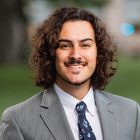
Samuel (Sam) Dutra Gollob
Mechanical Engineering https://engineering.mit.edu/fellows/samuel-sam-dutra-gollob/Chenghao Guo is a PhD candidate in electrical engineering and computer science whose research is in combinatorial statistics. As a MathWorks Fellow, Chenghao will expand his work to address challenges at the interface of computation and statistics on networks. His current work includes an exploration of graphs and hypergraphs, which are fundamental structures in numerous fields. Hypergraphs generalize graphs, with hyperedges consisting of subsets of the vertices; Chenghao is working to determine the conditions under which the projection of a hypergraph will result in information loss and, conversely, when a hypergraph can be recovered from its projection. His result identifies the precise density of a random 3-regular hypergraph for which sparser hypergraphs can be recovered from their projections and for which denser hypergraphs cannot, thus demonstrating that algorithms with provable guarantees for the simplest independent noise case can be used in much broader contexts via algorithmic pre-processing. Like many of Chenghao’s past and current projects, this research pushes the boundaries of combinatorial statistics and utilizes MATLAB’s power in theoretical mathematics to expand this new domain.
https://engineering.mit.edu/wp-content/uploads/2024/10/headshot_Guo_Chenghao_Mathworks_EECS_2025.jpg
Website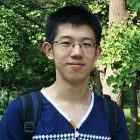
Chenghao Guo
Electrical Engineering and Computer Science https://engineering.mit.edu/fellows/chenghao-guo/Dat Quok Ha is a PhD candidate in civil and environmental engineering whose research focuses on topology optimization and increasing access to generative design tools through frameworks that actively involve humans. Dat uses a combination of computational mechanics, optimization, and AI tools in his work and has exclusively relied on MATLAB. Supported by his second MathWorks Fellowship, Dat will continue his research with extensions to his Human-Informed Topology Optimization (HiTop) framework. Users reveal their preferences on a final structural design as they interact with HiTop. This information can be surveyed, collected, and studied via machine learning to recommend the most optimal design strategy. Topology optimization offers an exciting opportunity to design structures with complex geometries that can be created with rapidly advancing digital manufacturing technologies. In addition, topology optimization could contribute significantly to sustainability by reducing waste in construction materials while achieving superior mechanical performance and aiding the discovery and manufacturing of new materials. Dat’s research has strong potential to leverage topology optimization in novel ways to create powerful design tools for diverse users and applications.
https://engineering.mit.edu/wp-content/uploads/2024/10/headshot_Ha_Dat_Quok_Mathworks_CEE_2025.jpg
Website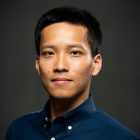
Dat Quok Ha
Civil and Environmental Engineering https://engineering.mit.edu/fellows/dat-quok-ha/Juyeop Han is a PhD candidate in mechanical engineering whose research interests lie at the intersection of uncertainty quantification and machine learning. Specifically, he is interested in how quantifying uncertainty in learning models can aid in the development of safer, more efficient robotics systems. As a MathWorks Fellow, Juyeop will work on methods for uncertainty quantification (UQ) in neural networks and their integration into robotics applications. To that end, he has developed a novel visual-inertial odometry framework that incorporates a convolutional neural network for pose estimation, resulting in greater efficiency and accuracy compared to cases without UQ. His next steps include theoretically developing evidential learning methods for joint tasks of regression and classification, along with applying these methods to perception- aware control and planning. MathWorks has significantly facilitated his research, and he has contributed toolboxes for deep learning with UQ and for perception, planning, and control with uncertainty. Juyeop’s research has the potential to advance the field of robotics by leveraging evidential learning to enhance robot perception, control, and planning, thereby creating a safe and efficient software structure for robotics.
https://engineering.mit.edu/wp-content/uploads/2024/10/headshot_Han_Juyeop_Mathworks_MechE_2025.jpg
Website
Juyeop Han
Mechanical Engineering https://engineering.mit.edu/fellows/juyeop-han/Zhiping He is a PhD candidate in electrical engineering and computer science. With the support of a MathWorks Fellowship, Zhiping will address the challenges in spintronics with numerical and
theoretical modeling methods. His recent and current projects include: establishing the theoretical foundation for magnetic dynamics of a noncollinear antiferromagnet, a highly promising material in computer memory and logic applications; experimental investigations of the transport property of magnetic tunnel junctions made from a topological semimetal, the basic building block for high- performance spintronic devices; and work toward a hybrid system composed of quantum spin, microwave cavity, and ferromagnetic spin wave, to reach coherent dynamic control. In this third project, Zhiping is implementing the innovative idea of using a microwave cavity as a mediator to enhance the coupling strength between quantum spins and ferromagnetic magnons. MathWorks tools are a central component of his research, and he has contributed numerous open-source resources to the microelectronics community. Zhiping’s work has strong potential to help realize the potential of spintronics and open new avenues for enhanced performance and efficiency in memory and computing devices.
https://engineering.mit.edu/wp-content/uploads/2024/10/headshot_He_Zhiping_Mathworks_EECS_2025.jpg
Website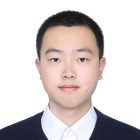
Zhiping He
Electrical Engineering and Computer Science https://engineering.mit.edu/fellows/zhiping-he/Erik Helstrom is a PhD candidate in civil and environmental engineering whose research explores the atmospheric oxidation of organic compounds with a focus on the formation of fine particulate matter (PM). Supported by a MathWorks Fellowship, Erik will pursue several innovative projects in instrument development and laboratory oxidation, including the development of a total suspended organic carbon instrument for laboratory use; comprehensive comparison of different mass spectrometric measurements of PM composition; measurement of various reactive nitrogen species; and use of a series of explicit chemical model simulations and laboratory experiments to survey the relationship between peroxy radical (RO2) chemistry and the properties of organic PM. Erik’s research, which draws on a number of MathWorks tools, such as the Framework for 0-D Atmospheric Modeling, provides a suite of novel analytical techniques that are advancing the study of atmospheric chemical mechanisms. The use of these tools in laboratory experiments could develop new insights into the evolution of reactive organic carbon, in particular, the formation and transformation of PM in differing atmospheric conditions.
https://engineering.mit.edu/wp-content/uploads/2024/10/headshot_Helstrom_Erik_Mathworks_CEE_2025.jpg
Website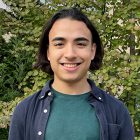
Erik Helstrom
Civil and Environmental Engineering https://engineering.mit.edu/fellows/erik-helstrom/Wenyuan (Roger) Hou is a PhD candidate in aeronautics and astronautics whose research interests are focused on design and structures for emerging propulsion applications. Roger has used MATLAB to model structural evolution processes during melt-based additive manufacturing of oxide dispersion-strengthened superalloys, a novel class of high-temperature materials with potential applications in reusable staged-combustion rocket engines. Supported by his second MathWorks Fellowship, he will build on these insights to explore how these alloys can enable novel turbine architectures that mitigate thermal fatigue. Roger’s work will integrate computationally efficient, reduced-order models of fatigue life with classical bounding theorems to rapidly sample the turbine design space and determine turbine designs that develop favorable residual stress profiles that suppress thermal fatigue. His research has strong potential to further our understanding of the structural evolution processes that govern the properties and performance of additively manufactured materials and, ultimately, to deliver novel turbine designs for reusable heavy-lift launch vehicles, unlocking next-generation space economics and space accessibility.
https://engineering.mit.edu/wp-content/uploads/2024/10/headshot_Hou_Wenyuan_Roger_Mathworks_AeroAstro_2025.jpg
Website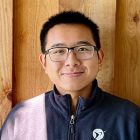
Wenyuan (Roger) Hou
Aeronautics and Astronautics https://engineering.mit.edu/fellows/wenyuan-roger-hou-2/Yi-Hsuan (Nemo) Hsiao is a PhD candidate in electrical engineering and computer science who is developing bumblebee-inspired aerial robots powered by artificial soft muscles, with the goal of achieving resilient robotic flight in cluttered environments. Nemo’s second MathWorks Fellowship will allow him to extend his testing and analysis of a 750 mg robot. During the past year, Nemo has worked extensively with engineers from Speedgoat and MathWorks to solve challenges related to on-board software, and ultimately resolved those challenges, adding many hardware safety designs in the process. After these upgrades, Nemo realized transformative results in the flight arena, successfully demonstrating a 1,000-second flight in his 750 mg robot, a result that is nearly two orders of magnitude longer than most existing sub-gram robots. He has also demonstrated double somersaults with a body angular velocity of 7,000 degrees per second, which is four times faster than the best quadrotor and two times faster than fruit flies. Nemo’s research continues to offer tools and approaches that significantly benefit the MathWorks community and is advancing the next generation of nature-inspired micro-robots.
https://engineering.mit.edu/wp-content/uploads/2024/10/headshot_Hsiao_Yi-Hsuan_Mathworks_SoE_2025.jpg
Website
Yi-Hsuan (Nemo) Hsiao
Electrical Engineering and Computer Science https://engineering.mit.edu/fellows/yi-hsuan-nemo-hsiao-2/Riley J. Hultquist is a PhD candidate in nuclear science and engineering whose research investigates structural materials for next-generation nuclear reactors. Using advanced synchrotron-based techniques combined with multiscale calculations, Riley seeks to gain an atomic-level understanding of defect behavior and thermophysical properties of specific materials. As a MathWorks Fellow, he will investigate strain in nanocrystals using diffraction patterns. The manufactured 3D crystal starts as several hundred 2D grayscale images that encode information about the crystal’s structure. Computational algorithms are employed in MATLAB to reconstruct the crystal from these data and study the strained substructures. Riley has used X-ray diffraction experiments to explore the inner workings of the atoms in the crystal lattice and is now studying how lattices respond to irradiation. Using MATLAB, Riley is investigating how crystals form faceted surfaces, and how some of these surfaces are better fit to withstand the damage of bombardment with energetic particles. Riley’s research is delivering key insights into the material properties of nanocrystals and could have important implications for next-generation nuclear reactors, fuel design, and sustainable energy.
https://engineering.mit.edu/wp-content/uploads/2024/10/headshot_Hultquist_Riley_J._Mathworks_NSE_2025.jpg
Website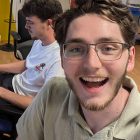
Riley J. Hultquist
Nuclear Science and Engineering https://engineering.mit.edu/fellows/riley-j-hultquist/Mahmudul (Ridul) Islam is a PhD candidate in materials science and engineering whose research aims to improve understanding of the properties and structure of metal alloys. Specifically, Ridul is examining the chemical short-range order of high-entropy alloys (HEA) to better understand and harness valuable characteristics of HEAs, such as mechanical strength and hardness, wear and corrosion resistance, and radiation damage resistance. His current work involves large-scale atomistic simulations using state-of-the-art machine-learning potentials to investigate chemical mixing during the plastic deformation of HEAs. He has also developed a physics-based model, assisted by machine learning and information theory techniques, to interpret the simulation results. This work has yielded the first observation of nonequilibrium steady states of chemical order during plastic deformation of metals, an insight Ridul plans to apply in modeling various additive manufacturing approaches. Ridul’s research in metallic alloys offers potential benefits in a wide range of industries, research disciplines, and spheres of technology development, from construction and automotive applications to aerospace, electronics, and energy production.
https://engineering.mit.edu/wp-content/uploads/2024/10/headshot_Islam_Mahmudul_Ridul_Mathworks_SoE_2025.jpg
Website
Mahmudul (Ridul) Islam
Materials Science and Engineering https://engineering.mit.edu/fellows/mahmudul-ridul-islam/Hannah Jackson is a PhD candidate in medical engineering and medical physics whose research is focused on improved treatment approaches for drug-resistant epilepsy using a recently developed implantable device to deliver micro-doses of drugs to small regions of the brain. Supported by her second MathWorks Fellowship, Hannah will continue to hone her novel device and improve its clinical translation. Her immediate objective is to optimize seizure detection algorithms to ensure compatibility across all EEG recording setups and to support the collaboration of researchers across institutions and experimental set-ups. She is also exploring the possibility of combining EEG monitoring with the drug delivery system to create a closed-loop system that can detect seizure activity and deliver drugs on an as-needed basis. To pursue this goal, Hannah will explore machine learning and AI techniques for pattern recognition. MATLAB and associated computational tools will continue to be indispensable assets in her work. Hannah’s research has great potential to expand our understanding of epilepsy, and to advance new treatment approaches that will improve patients’ lives.
https://engineering.mit.edu/wp-content/uploads/2024/10/headshot_Jackson_Hannah_Mathworks_SoE_2025.jpg
Website
Hannah Jackson
Institute for Medical Engineering and Science https://engineering.mit.edu/fellows/hannah-jackson-2/Hyeonseok Kim is a PhD candidate whose research interests are focused on in-space manufacturing of nanosatellite (CubeSat) hardware, with the goal of delivering innovative, lower-cost technologies to democratize access to space. Specifically, he is addressing the challenge that a majority of CubeSats have no means of propulsion, which greatly limits their capabilities. Supported by a MathWorks Fellowship, Hyeonseok will expand his work on 3D-printed electrospray thrusters for CubeSats that are compatible with in-space manufacturing and could be the first of their kind shown to work uniformly. These space engines harness electrohydrodynamic phenomena to eject propellant droplets at a high speed, producing thrust. A key element of his project is the development of novel microfluidics for uniform flow distribution, delivering uniform flow across all emitters against fabrication errors and dynamic outlet conditions caused by non-uniform electric fields and interfacial effects. MATLAB is essential to his design, optimization, analysis, and data visualization. Hyeonseok’s work has the potential to offer key insights into the basic physics of electrospray propulsion and unlock significant new potential for CubeSats in space exploration and research.
https://engineering.mit.edu/wp-content/uploads/2024/10/headshot_Kim_Hyeonseok_Mathworks_MechE_2025.jpg
Website
Hyeonseok Kim
Mechanical Engineering https://engineering.mit.edu/fellows/hyeonseok-kim/Evan King is a PhD student in civil and environmental engineering whose research is focused on quantifying how mountainous watersheds control the supply of water and its quality to dependent downstream communities. Specifically, Evan investigates how landscape properties, such as topography, geology, and vegetation type, influence key hydrologic-biogeochemical processes. Evan’s current work, centered on the Sierra Nevada and the Rocky Mountains, explores how subsurface structure combines with variable climate forcing to determine the distribution of water available for plant communities and streamflow levels. To conduct this analysis, she uses a combination of high-resolution remote sensing and geospatial datasets, along with field-based observations, and has used, developed, and shared numerous hydrology-focused MATLAB codes in the course of her work. Evan’s ultimate goal is to establish robust, transferable relationships between vegetation dynamics, energy, and water availability on the watershed scale. Her research has the potential to advance our understanding of mountainous watershed behaviors and enable the prediction of large-scale hydrological responses of vegetation communities in the face of a warming climate.
https://engineering.mit.edu/wp-content/uploads/2024/10/headshot_King_Evan_Mathworks_CEE_2025.jpg
Website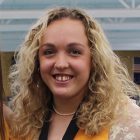
Evan King
Civil and Environmental Engineering https://engineering.mit.edu/fellows/evan-king/Pip Knight is a PhD candidate in materials science and engineering who seeks a deeper understanding of nanoscale kinetics to further the design of nanomaterials. Specifically, she is studying the growth and epitaxy of 3D metals and semiconductors on 2D materials. As a MathWorks Fellow, Pip will investigate titanium silicides and titanium oxides, which can catalyze the splitting of water into hydrogen and oxygen using energy from the sun, a clean way to produce hydrogen without fossil fuels. The addition of 2D materials enhances efficiency due to their light absorption properties and their ability to slow electron-hole recombination in the device. Pip is recording in situ videos of how titanium reacts with a silicon-containing gas (disilane) to form titanium silicides; how titanium reacts with oxygen; and how titanium influences the reactions of gold with silicon to grow silicon nanostructures with novel shapes for plasmonic optoelectronic devices. Pip’s research, which relies significantly on MATLAB, has yielded valuable insights into nanoscale kinetics and has the potential to advance nanomaterial design through in situ microscopy for a variety of applications, including clean energy.
https://engineering.mit.edu/wp-content/uploads/2024/10/headshot_Knight_Pip_Mathworks_SoE_2025.jpg
Website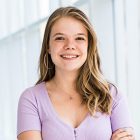
Pip Knight
Materials Science and Engineering https://engineering.mit.edu/fellows/pip-knight/Kota Kondo is a PhD candidate in aeronautics and astronautics whose research is focused on autonomous multi-agent trajectory planning for unmanned aerial vehicles (UAVs). As a MathWorks Fellow, Kota will expand his innovative work to develop planners capable of supporting complex missions that demand intricate coordination between multiple agents. His achievements include major contributions to RMADER, a multi-agent trajectory planner that generates collision-free trajectories even when communications between agents are delayed. Kota was also centrally involved in the creation of PUMA, a multi-agent trajectory planner that addresses uncertainties around known obstacles and their directions of motion. In addition, he has contributed to REAL, an adaptive model leveraging large language models for UAV control; to SOS-Match, a system for detecting and matching objects in unstructured environments; and to an innovative approach leveraging diffusion models for constraint-satisfied trajectory planning for UAVs. MATLAB plays a crucial role in all of these research threads. Kota’s pathbreaking work has the potential to advance safe and reliable UAV technologies for a wide variety of applications, from package delivery to surveillance and rescue.
https://engineering.mit.edu/wp-content/uploads/2024/10/headshot_Kondo_Kota_Mathworks_AeroAstro_2025.jpg
Website
Kota Kondo
Aeronautics and Astronautics https://engineering.mit.edu/fellows/kota-kondo/Jimin Kwag is a PhD candidate in chemical engineering whose research is focused on the self- assembly of colloidal semiconductor nanocrystals (NCs). As a MathWorks Fellow, Jimin will explore the fundamental principles of self-assembly in lead sulfide (PbS) NCs, which exhibit appealing properties such as a direct optical band gap, multiple exciton generation, and infrared absorption. By manipulating the NC size, core shape, and organic ligand chemistry, it is possible to tune their chemical, optical, and electronic properties. Jimin is particularly interested in the role of organic ligands in the self-assembly process of PbS NCs and in elucidating the structure of the organic ligand shell. To that end, she is applying neutron and x-ray scattering to characterize the structure of inorganic NC cores and small-angle neutron scattering to characterize the role of the organic ligand shell. MATLAB plays a pivotal role in processing and interpreting her experimental results. Jimin’s research is shedding new light on NC self-assembly and paving the way for new applications in photovoltaics and optoelectronics in a variety of fields, including imaging, solar energy harvesting, displays, and communications.
https://engineering.mit.edu/wp-content/uploads/2024/10/headshot_Jimin_Mathworks_ChemE_2025.jpg
Website
Jimin Kwag
Chemical Engineering https://engineering.mit.edu/fellows/jimin-kwag/Regina Lee is a PhD candidate in mechanical engineering whose research at MIT’s Laser Interferometer Gravitational-Wave Observatory (LIGO) Lab aims to measure extremely small space-time vibrations from gravitational waves from sources such as black hole mergers. As a MathWorks Fellow, Regina will focus on modeling, construction, and testing of suspension prototypes with the aim of designing the next generation of LIGO suspensions. A key aspect of her work is creating accurate analytical models that allow for an intuitive understanding of suspension redesigns. Her new MATLAB-based model includes the dynamics of all six degrees of freedom for each of the four suspension masses, allows for quick alterations to the suspension geometry, and is entirely in state space form, which enables extremely accurate calculations of the cavity dynamics, including the effects of laser power. Regina’s pioneering work is part of LIGO’s collaborative efforts with dozens of universities around the world. Her research sets the stage for the design of an even more complex suspension system envisioned for Cosmic Explorer, the next leap in gravitational-wave detection, which aims to observe gravitational waves across the entire universe.
https://engineering.mit.edu/wp-content/uploads/2024/10/headshot_Lee_Regina_Mathworks_MechE_2025.jpg
Website
Regina Lee
Mechanical Engineering https://engineering.mit.edu/fellows/regina-lee/Kunzan Liu is a PhD candidate in electrical engineering and computer science whose research aims to advance metabolic and structural imaging of living tissues and next-generation imaging tools in biomedicine. As a MathWorks Fellow, Kunzan will pursue a project in 3D optical microscopy aimed at capturing the cellular metabolic dynamics deep within intact and living biological systems. His deep-tissue label-free 3D imaging platform enables precise characterization of metabolic and structural changes in living engineered human multicellular microtissues and significantly outperforms existing techniques. Its modular design (multimode fiber with a slip-on fiber shaper) is anticipated to allow wide adoption of this methodology for demanding in vivo and in vitro imaging applications, including cancer research, autoimmune diseases, and tissue engineering. MATLAB plays a central role in Kunzan’s work, supporting simulation, signal processing, and machine learning, and he is developing open-source tools of value to researchers in imaging, sensing, optics, and optimization. Kunzan’s work has strong potential to advance a plethora of new imaging applications, from health monitoring and pharmaceutical research to disease diagnosis and food sensing.
https://engineering.mit.edu/wp-content/uploads/2024/10/headshot_Liu_Kunzan_Mathworks_EECS_2025.jpg
Website